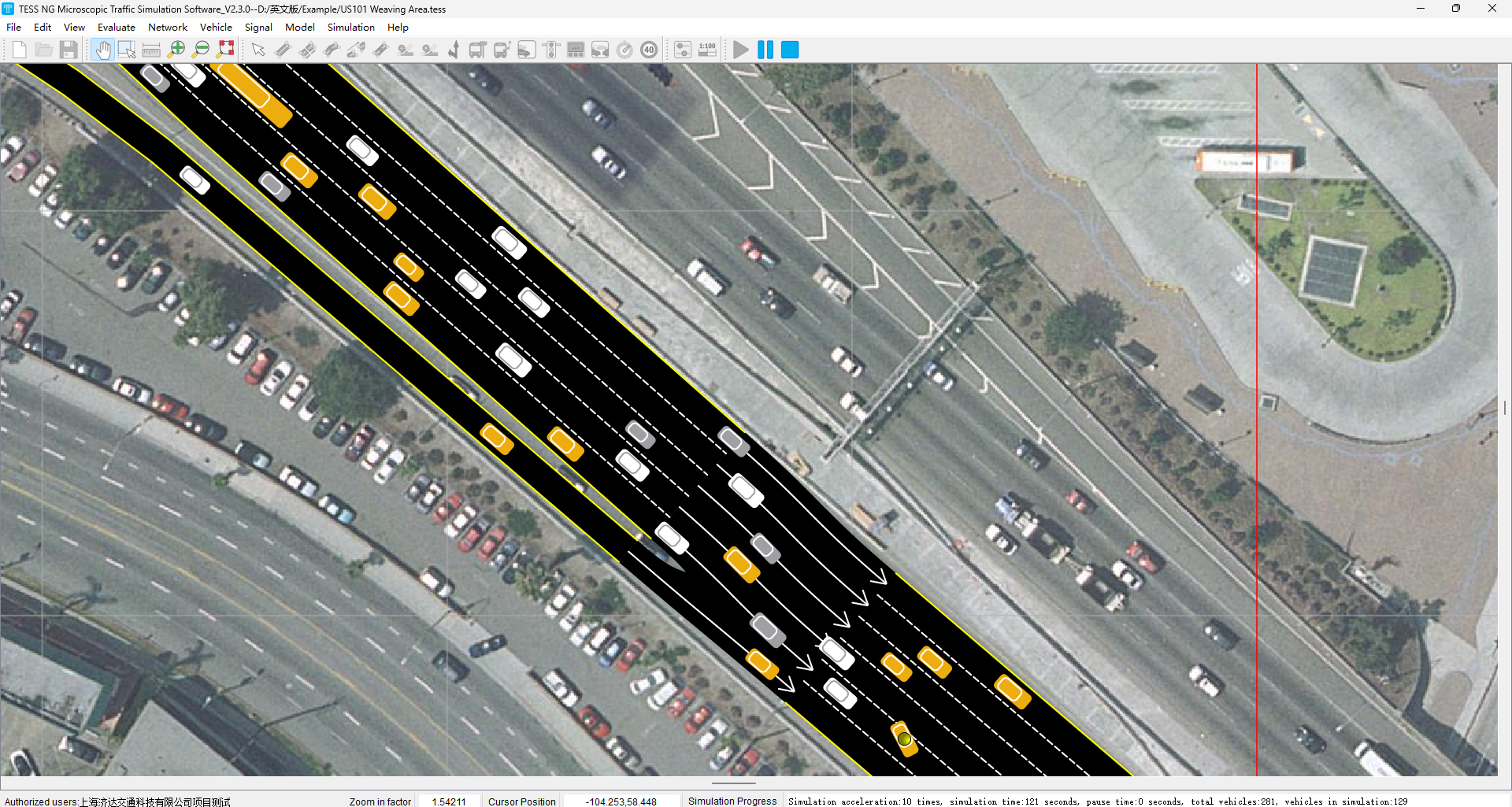Simulation Helps Evaluate and Improve Transportation Systems
Traffic Engineering Simulation

Traffic engineering simulation allows planners to test different ideas and measures in a virtual environment. This gives them valuable information about the effects of planned measures before they are implemented.
Development of traffic simulation has been tremendous during the past 40 years, mainly driven by advances in computer hardware technology and programming tools. It has been classified into macroscopic, mesoscopic and microscopic models according to level of detail.
Intersections
In traffic engineering simulation the model of vehicle interactions is typically microscopic. However, the interaction of vehicles within an intersection is one of the few areas where macroscopic simulation is also widely used. The British TRANSYT-program and the American FREQ- and FREFLO-programs are examples of macroscopic traffic flow analysis software.
Microsimulation software, such as Synchro from Trafficware and SimTraffic from ITE, can be used to analyze both arterials and signalized/unsignalized intersections. These programs can output performance measures (LOS, delay, queue lengths) based on standard MOEs from the Highway Capacity Manual and can determine the effects of signal progression, timings, cycle lengths, splits, and offsets. These models can be used to help evaluate and fine-tune signal priority logic as well as to compare different design alternatives for intersections, roundabouts, and grade separated interchanges. Intersection modeling is challenging because drivers choose among an infinite number of possible paths and speeds inside the intersection and can interact with other vehicles.
Corridors
Corridor analysis determines performance measures for a given corridor, such as congestion intensity, duration, extent and variability. It is often used for multi-facility, multi-modal transportation systems such as Highway subsystems (Freeways and Rural highways), Urban street system geometry and Transit.
The results of a simulation model are usually displayed in the form of animated displays or numerical output in text files. An animation can provide a visual representation of the traffic flow, while the numerical output provides the analyst with quantitative comparisons of performance.
Microsimulation models are capable of modeling the behavior of individual vehicles and travelers at a finer scale than macroscopic models. These models can be used to model air corridor traffic flows as well as traffic control strategies such as ramp metering and pre-emption. Examples of these models include the Aimsun product of TSS and COMMuter by Azalient. These models typically require more computer time and storage than macroscopic simulation tools to study the detailed characteristics of traffic flow elements.
Freeways
In freeway traffic engineering, simulation models are a tool to improve the understanding of complex transport system behaviour. In this case, traffic simulation is usually based on microscopic modelling (with the implication that all vehicles behave the same and the model reflects reality).
Using models in connection with lane capacity analysis, one can produce further evaluations concerning the distribution of flow rates for various density thresholds. This is especially important for assessing the probability that a LOS C or a LOS D condition would be exceeded on specific sections of a freeway.
However, it should be emphasized that the results of simulations only provide an impression of the distribution of traffic flows on particular days. This is why the model must be calibrated to actual traffic conditions. Nevertheless, the use of simulation models is a useful complement to roadway testing on actual road networks. This is particularly true for the evaluation of new traffic calming measures which are often tested on driving simulators first before they are implemented on real roads.
Pedestrians
Pedestrian traffic simulation is a classic use case when it comes to urban planning. It is also used to verify and improve capacity in public buildings such as airports, railway stations, shopping malls, and stadiums.
Generally, pedestrian simulation models can be classified as macroscopic, mesoscopic and microscopic. A macroscopic model describes most entities at a low level of detail and provides aggregate measures while a mesoscopic model provides more detailed information about the system entities.
Microscopic pedestrian models take into account the interaction between pedestrians in different layers. They are modeled as a combination of walking speed, direction and the distance between pedestrians.
The distance between two pedestrians is influenced by the interaction strength, interaction range and the relative time. Moreover, it is possible to specify an entrance angle for a service point, which can be used to model for example information boards, ATMs and shops. It is also possible to create a polyline or polygon obstacle to prevent pedestrians from entering a specific area.

Leave a Reply